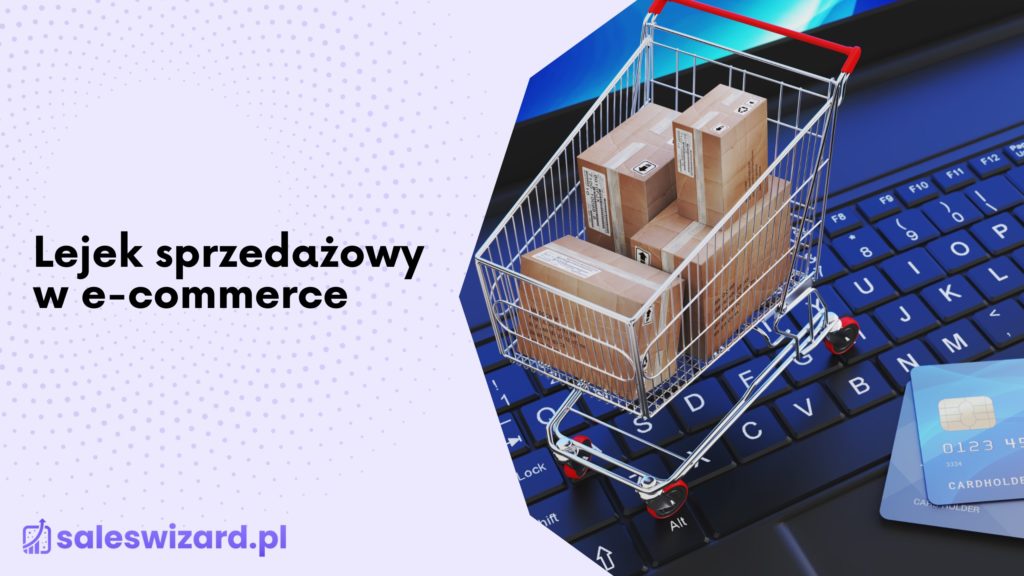Sales funnel in e-commerce

In the world e-commerce, application b2b sales funnel and The digital sales funnel is crucial to achieving success in online sales. The specifics of the e-commerce sales funnel differ from traditional models, but its basic stages remain similar. It is therefore worth taking a look at what it looks like The b2b funnel in the context of e-commerce and how it can be optimized to increase sales efficiency.
- Awareness – at this stage The b2b sales funnel in e-commerce, potential customers learn about the existence of an online store and the products or services it offers. It is important to focus on branding and search engine positioning of the site to attract as many interested people as possible.
- Interest – once potential customers already know about the store, you need to build their interest in your offer. To do this, it’s a good idea to use various marketing techniques, such as content marketing, social media advertising and email marketing.
- Decision – at this stage sales funnel in e-commerce, customers compare offers from different stores and make a choice about which product or service they want to purchase. It is important to offer attractive prices, promotions and clearly present product information to help customers make their decision.
- Action – the final stage The b2b funnel in e-commerce is the finalization of the purchase by the customer. It is worthwhile to ensure that the purchase process is intuitive and simple, without unnecessary obstacles that may discourage the customer from finalizing the transaction.
In order to optimize e-commerce sales funnel, it is worth focusing on data analysis and testing different marketing strategies. This will help you identify which activities yield the best results and adjust the funnel to meet customer needs and expectations. In addition, it’s worth investing in analytical tools and process automation to further increase efficiency The b2b sales funnel in e-commerce.
Looking for sales funnels in CRM?
Learn more about sales funnel functionality, statusing and kanban board in SalesWizard CRM!
- Awareness – at this stage of the b2b e-commerce sales funnel, potential customers learn about the existence of the online store and the products or services it offers. It is important to focus on branding and search engine positioning of the site to attract as many interested people as possible.
- Interest – once potential customers already know about the store, you need to build their interest in your offer. To do this, it’s a good idea to use various marketing techniques, such as content marketing, social media advertising and email marketing.
- Decision – at this stage of the e-commerce sales funnel, customers compare offers from different stores and make a choice about which product or service they want to purchase. It is important to offer attractive prices, promotions and clearly present product information to help customers make their decision.
- Action – The last stage of the b2b funnel in e-commerce is the finalization of the purchase by the customer. It is worthwhile to ensure that the purchase process is intuitive and simple, without unnecessary obstacles that may discourage the customer from finalizing the transaction.
Sales funnel vs. buying process
The sales funnel is closely related to the customer’ s purchase path, which includes all the stages a customer goes through before purchasing a product. The influence of the funnel on buying decisions is crucial, as it allows understanding and optimizing the sales process and customer conversions at different stages of the sale. When considering a purchase, a customer goes through several stages of the buying process, which can be depicted as a sales funnel. At each of these stages, the customer may make decisions that will affect the finalization of the transaction. Therefore, it is important to understand how the customer moves along the purchase path and what factors influence his decisions.- Awareness – at this stage the customer learns of the existence of the product or service. It is important to arouse the customer’s interest and make him want to learn more.
- Interest – the customer explores information about the product, compares it with competitors and considers whether it is worth buying. At this stage, it is worth providing the customer with valuable information that will convince him to further consider the purchase.
- Consideration – the customer contemplates the purchase, analyzes the available options and considers his needs and budget. It is important at this stage to introduce the customer to the benefits of buying the product and address any doubts.
- Decision – the customer makes the decision to buy the product. At this stage, it is worthwhile to make the buying process easy and convenient to minimize the risk of abandoning the transaction.
- Purchase – a customer makes a purchase of a product. It is important to make the process simple, fast and hassle-free, which increases the chances of a successful transaction.
Abandoned shopping carts vs. sales funnels
Abandoned shopping carts are one of the main problems in the context of the sales funnel, especially in the e-commerce industry. They refer to the situation when a customer adds products to the shopping cart, but does not finalize the purchase. Abandoned shopping carts negatively affect conversions and reduce the effectiveness of the sales funnel. However, there are several methods to deal with this problem:- Analyzing the reasons for shopping cart aband onment – understanding why customers abandon purchases allows you to make appropriate changes to the sales process. This can include analyzing data from Google Analytics, studying user behavior on the site or conducting customer surveys.
- Simplify the shopping process – an overly complicated shopping process can discourage customers from completing the transaction. Therefore, it’s worth reducing the number of steps, simplifying forms or allowing purchases without registration.
- Remarketing – with remarketing, you can remind customers of abandoned shopping carts, such as by displaying personalized ads on social media or sending reminder emails about an uncompleted purchase.
- Special offers and discounts – Encouraging customers to return to the abandoned cart by offering special promotions, discounts or free shipping can effectively increase the chances of completing the purchase.
- Customer support – the availability of fast and effective customer support, such as through live chat, can help resolve customers’ problems or concerns that prompted them to abandon their shopping carts.
